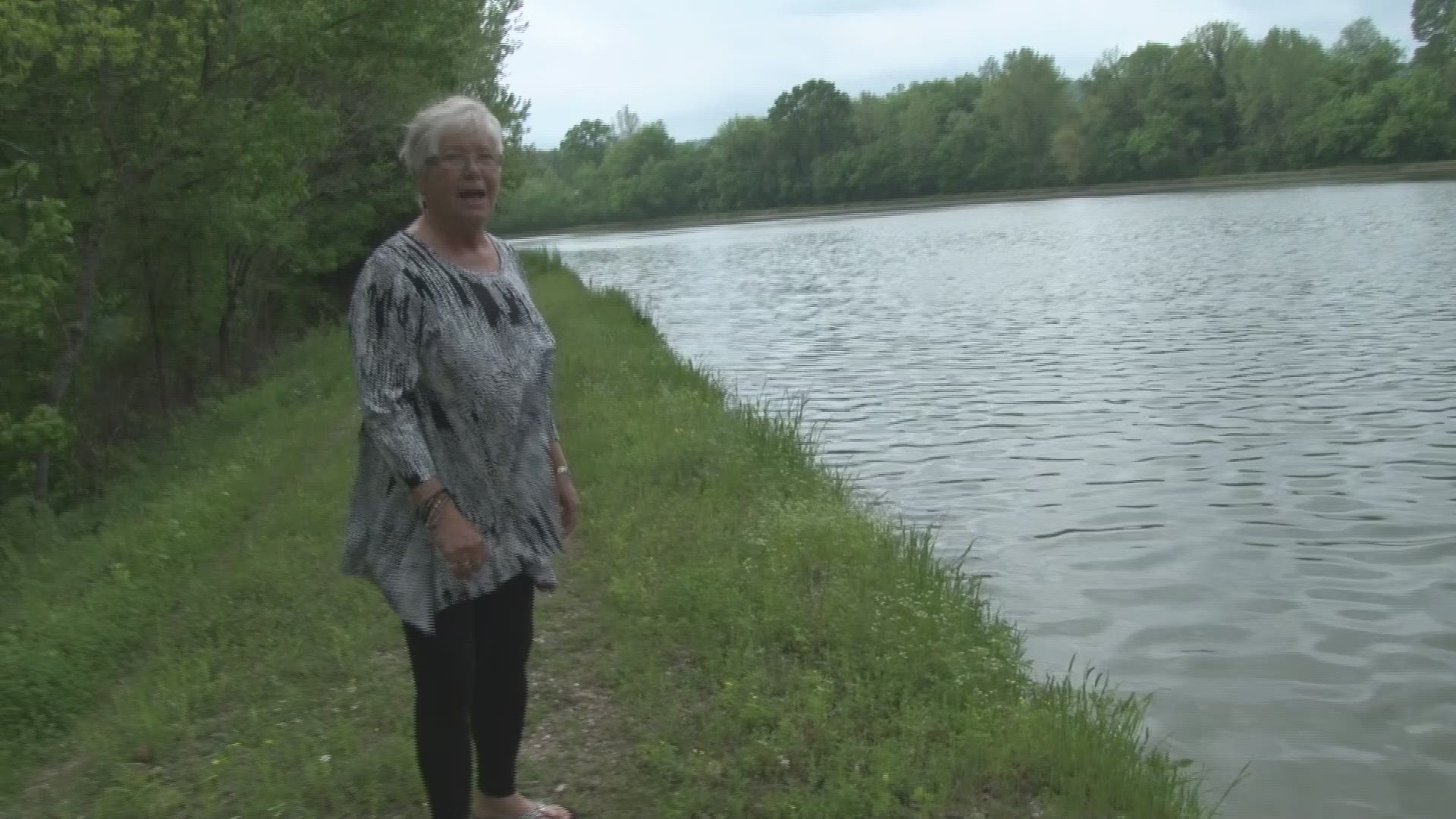A viewer tip from people living along the South Fork of the Ouachita River alerted the 11 News Investigators to what looked like a raw sewage spill floating by their backyard. A closer look reveals the city of Mt. Ida wastewater department did indeed mix dirty water from a treatment pond with the river, but had to do it to avoid a crisis.
“It was right up to the top,” said Mt. Ida Mayor Jo Cummins as she walked along a levee separating the pond from the passing South Fork about 30 yards below.
“It was so much because we had a record rainfall,” said James Stanley as he walked along the levee with his boss. Both are glad the wet winter of 2018 is behind them.
The changing creek and record rains threatened that levee with failure, potentially sending a rush of sewage and sludge into Lake Ouachita, the source for drinking water for thousands.
“It almost went because the river changed course,” Stanley said. “Before the dirt was done you wouldn't be standing [on the levee].”
So to avoid a huge mess, Stanley asked permission to make a little mess.
Workers cut a hole on one end of the pond with a backhoe and let the water drain down to the creek.
The Arkansas Department of Environmental Quality let them do it because it was an emergency.
“I think we did the right thing letting some of it out because that might have been the thing that saved it,” Stanley said.
But it still made a mess, particularly for neighbors of the plant and pond. At least one person complained to the ADEQ via a reporting hotline. Another person made a video a few days after the draining started in early March. The camera person points to washed up feminine products and other items in the mud and water trickling from the pond.
Two months after the breach, some of those items like tampon applicators could still be found in the spring overgrowth.
Stanley did a quick survey of his own for a visiting reporter and had more trouble finding those things. He said even if things like that got by him, it would have been the equivalent of litter and far short of a health hazard.
“In order to keep from creating a rupture when we were letting it out, we let it out slowly,” Stanley said. “I was down there two or three times a day for eight or nine days and I didn't see anything.”
Stanley also makes a point that he had the leaking water tested.
The contracted, state-sanctioned lab found the water to have only traces of sewage present. The measurement of biochemical oxygen demand came in above normal levels. Three other pollution measures came back below allowable limits. In all the plant released 3.8 million gallons from the pond.
“It is a violation of our permit to have an unauthorized discharge even when we get permission,” Stanley said.
But no fines or punishment will be handed out because the city reported everything appropriately and inspectors judged the imminent levee failure to be an emergency.
A records search finds 11 other times when an Arkansas municipal treatment facility ran afoul of discharge or bypass rules in the last two years. In most cases ADEQ has little recourse.
Since you can't un-ring the bell or get that water back, so it all found its way downstream. The state agency often orders fixes and little else, because stiff fines won't do any good for a small city like Mt. Ida. The state and water managers have to rely on nature to clean the mess.
Meanwhile, Mt. Ida has a plan in place.
“The engineer is quite sure that we can get some funding and grant money because of the size of the issue,” said Mayor Cummins, who added $8,900 has already been spent on reinforcing the levee so far. “There’s no choice because we've got to make it safe.”

